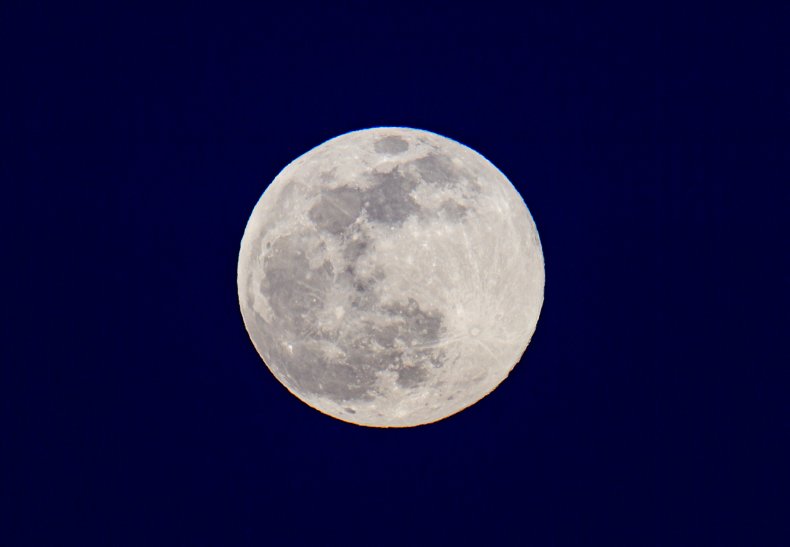Why Isn't the Pink Moon Pink? Skywatchers Confused As Supermoon Looks White
Disappointed stargazers have taken to social media to complain that Monday night's pink moon was not actually pink.
Their confusion is understandable, but the term does not refer to the moon's color. The April full moon gets its name from the wildflowers of the moss pink, also called creeping phlox, which is one of the earliest flowering plants of spring in the eastern U.S.
The pink moon is listed in the Maine Farmers' Almanac, which began publishing Native American names for full moons in the 1930s, according to Gordon Johnston, a retired NASA executive who explained the name in a blog post earlier this month. The full moon in May is known as the flower moon.
Monday night's full moon should still have appeared bigger and brighter than usual in the sky, because it was also a supermoon—meaning it is physically closer to Earth than average. This usually happens between three and four times a year.
Still, some Twitter users were less than impressed. One wrote: "I was promised a #pinkmoon but there isn't one. Who lied?"
Othes appreciated the supermoon's brightness, with one posting: "Not too pink, but definitely the brightest I've seen."
This moon isn’t pink! I want a refund #PINKMOON @DanielleDozier pic.twitter.com/mb0JeVuSY2
— J🍩ey Bag 🍩f D🍩nuts 🍩 (@joeybagovdonuts) April 27, 2021
that’s dope wtf i wish it was still pink tho #pinkmoon pic.twitter.com/iaKU0IQI3z
— sofia (@ninetiesIouis) April 27, 2021
she’s not pink, but she’s beautiful 🌕🤍 #PINKMOON pic.twitter.com/UQkWPjoQ1I
— 𝐢𝐭𝐬𝐦𝐲𝐛𝐮𝐫𝐟𝐟𝐝𝐚𝐲 🥳 (@prettystonerboy) April 27, 2021
For skywatchers who still want to see the pink supermoon, even though it won't actually be pink, it will appear full until Wednesday morning.
Supermoons occur because the moon's orbit around the Earth is not exactly circular. It is slightly oval-shaped, which astronomers refer to as an "eccentricity." This means that at some points the moon is closer to our planet than at other times.
When the moon is at its closest point to Earth in its orbit, this is called its perigee. When the moon is furthest away, it is said to be at its apogee. The moon at its perigee may appear around 14 percent bigger than when it is at its apogee.
Gianluca Masi, manager of the Virtual Telescope Project in central Italy, told Newsweek that Monday night's supermoon was around 221,000 miles away, compared to its average distance of around 238,000 miles.
Supermoons are also brighter than usual, casting around 30 percent more light on the planet than they do when the moon is dimmest. Supermoons may have a small effect on tides, but this effect will be "very tiny, perhaps only affecting them by a few centimetres at the most," said Professor Sara Russell in an online article for the Natural History Museum in London.


